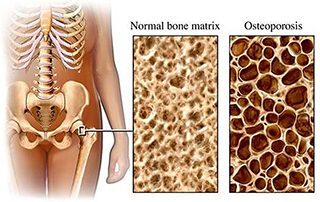
Neck pain can affect every aspect of your life, from focusing at work to enjoying quality time with loved ones. If you’re searching for a solution that doesn’t rely solely on painkillers or invasive procedures, physical therapy may be the answer. This approach addresses not just the symptoms of neck pain but also its root causes, offering long-term relief and improved quality of life.
This blog will explore how physical therapy works, common causes of neck pain, and why this treatment method is often recommended.
Understanding Neck Pain
Before we jump into how physical therapy can help, it’s important to understand what causes neck pain. Neck pain is not a single condition but rather a symptom that can stem from various underlying issues.
What Causes Neck Pain?
Here are some of the most common causes:
- Poor Posture: Slouching while working at a desk or looking at a phone creates strain on your neck. Known as “tech neck,” this is one of the most common modern-day causes of discomfort.
- Muscle Strain: Overuse of neck muscles, such as during prolonged driving or awkward sleeping positions, can lead to pain.
- Whiplash: Injuries from car accidents or sudden impacts can overstretch ligaments and muscles in the neck.
- Degenerative Conditions: Conditions like osteoarthritis or herniated discs in the cervical spine can lead to chronic neck stiffness and soreness.
Symptoms of Neck Pain
Neck pain isn’t always limited to the neck. Some accompanying symptoms include:
- Stiffness
- Headaches
- Pain in shoulders and arms
- Tingling or numbness in fingers
- Difficulty turning your head from side to side
If you’re experiencing chronic or severe neck pain, physical therapy can bring relief by addressing these symptoms and more.
Why Physical Therapy?
When neck pain interferes with your life, medication can offer temporary relief but doesn’t address underlying issues. This is where physical therapy excels. Unlike quick fixes, physical therapy is designed to treat pain at its source, prevent recurrence, and enhance overall mobility and function.
Benefits of Physical Therapy for Neck Pain
- Non-Invasive Treatment: Avoid surgeries or procedures whenever possible.
- Pain Management: Reduce or eliminate reliance on painkillers.
- Improved Mobility: Regain freedom of motion in your neck and shoulders.
- Prevention: Learn strategies to prevent future injuries.
Physical therapy builds both strength and awareness, targeting the physical and habitual causes of pain.
How Physical Therapy Works to Relieve Neck Pain
If you’re new to physical therapy, you might wonder how it actually works. The process combines a range of targeted techniques aimed at addressing posture, flexibility, and muscle strength. Here’s what you can expect:
1. Initial Evaluation
Every effective treatment plan begins with understanding your specific issues. A physical therapist will assess:
- Your posture
- The range of motion in your neck, thoracic spine (midback) and shoulders
- Pain points and triggers
- Your medical history and daily habits (e.g., work positions, exercise routines)
By examining the root causes, a therapist can design a plan tailored to your condition and lifestyle.
2. Manual Therapy
Manual therapy refers to hands-on techniques used by therapists to relieve pain and tension. Techniques may include:
- Massage / Soft Tissue Mobiliztion: to reduce muscle tightness, enhance blood flow and reduce inflammation
- Joint Mobilization to improve flexibility
By targeting stiff or sore areas, manual therapy provides immediate and tangible relief.
3. Targeted Exercises
One of the cornerstones of physical therapy is exercise. Don’t worry—you won’t be lifting heavy weights or doing anything extreme. Instead, you’ll focus on targeted exercises that include:
- Stretching to loosen tight muscles
- Strengthening Exercises to support the neck and spine
- Range of Motion Drills to improve flexibility
These exercises are carefully monitored by your therapist to ensure you’re doing them correctly and safely. Not all patients benefit from all three above, a custom, tailored program is created for you, with your needs in mind.
4. Posture Training
Remember “tech neck”? Poor posture is often a driving force behind neck pain. Your therapist will show you how to sit, stand, and move in ways that reduce strain on your neck.
For example:
- Adjusting your workstation ergonomics
- Learning how to align your shoulders, neck, and hips
- Identifying bad habits, like leaning forward toward your laptop
These posture corrections are practical techniques you can use every day to protect your neck.
5. Modalities and Tools
Physical therapists also utilize various tools and technologies to support your treatment, including:
- Heat and Cold Therapy for pain relief and reduced swelling
- Electrical Stimulation to improve circulation and reduce muscle spasms
- Ultrasound Therapy to promote tissue healing
Modalities may enhance the recovery process by addressing pain and inflammation directly. Not all care plans require the use of modalities, however.
6. Education and Lifestyle Adjustments
Finally, physical therapy equips you with the knowledge you need for long-term success. From stress management to ergonomic setups, even small changes can make a big difference in preventing neck pain from returning.
Keep Reading…
What is the Meeks Method?
As mentioned in my last blog about Osteoporosis, this [...]
What is Osteoporosis?
What is Osteoporosis? Osteoporosis is a condition that causes [...]



